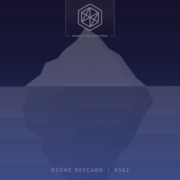Levallois-Perret, le 21 juillet 2022. SAP annonce la nomination d’Olivier Nollent au poste de Managing Director de SAP France. Olivier Nollent reporte à Rohit Nagarajan, Président EMEA North de SAP.
Olivier Nollent dirigera l’activité de l’une des plus importantes filiales commerciales de SAP, leader mondial des logiciels d’entreprise. Il aura pour mission :
- de renforcer les synergies avec les clients, ainsi qu’avec l’écosystème de partenaires, dans leurs grands enjeux de transformation numérique (gestion de l’expérience, gestion intelligente des dépenses, réduction de l’empreinte sur l’environnement…), et d’innovation (intelligence artificielle, big data, blockchain…) grâce à ses technologies avancées et ses centres de R&D (SAP Labs) et avec son accélérateur de startups SAP.iO basé en France.
- de poursuivre la croissance de SAP en France via le développement de ses activités Cloud auprès des grands comptes et des PME. Il s’appuiera à cet effet sur l’expertise du Groupe dans les domaines des logiciels ERP, Analytics, Supply Chain Management, RH et de gestion de l’expérience client, ainsi que sur le plus large portefeuille de solutions modulaires disponibles sur site, Cloud ou hybrides.

Olivier est diplômé de l’INSEEC et a débuté sa carrière chez HP, puis a passé 13 années chez Microsoft où il a occupé avec succès plusieurs rôles de direction commerciale, jouant un rôle clé dans la transition de l’entreprise vers le Cloud.
En avril dernier, après 5 années chez Salesforce, il rejoint SAP en tant que Senior Vice President Industries.
Son expérience des grands acteurs du secteur, sa solide expertise dans le développement des business de la Tech et son leadership éprouvé auprès de grandes organisations commerciales sont autant d’atouts pour accompagner la dynamique de croissance de SAP France.
Gérald Karsenti reste Président du Conseil d’Administration, assurant la direction générale de l’entreprise. Il accompagnera également Olivier Nollent dans sa transition vers son nouveau poste, en consolidant la notoriété de SAP sur le marché et en cultivant les relations avec ses clients et son écosystème.
The post Nomination d’Olivier Nollent au poste de Managing Director de SAP France appeared first on SAP France News.
Source de l’article sur sap.com










